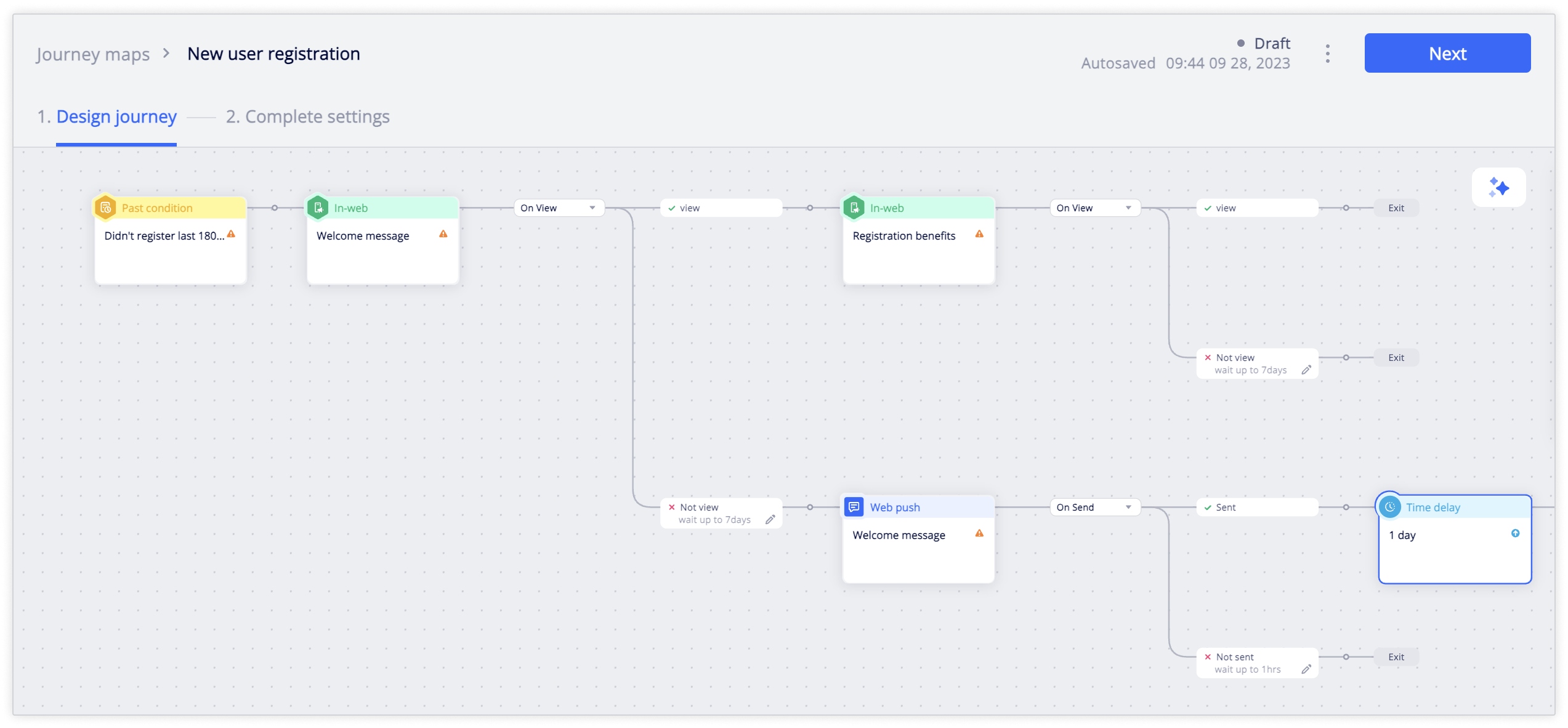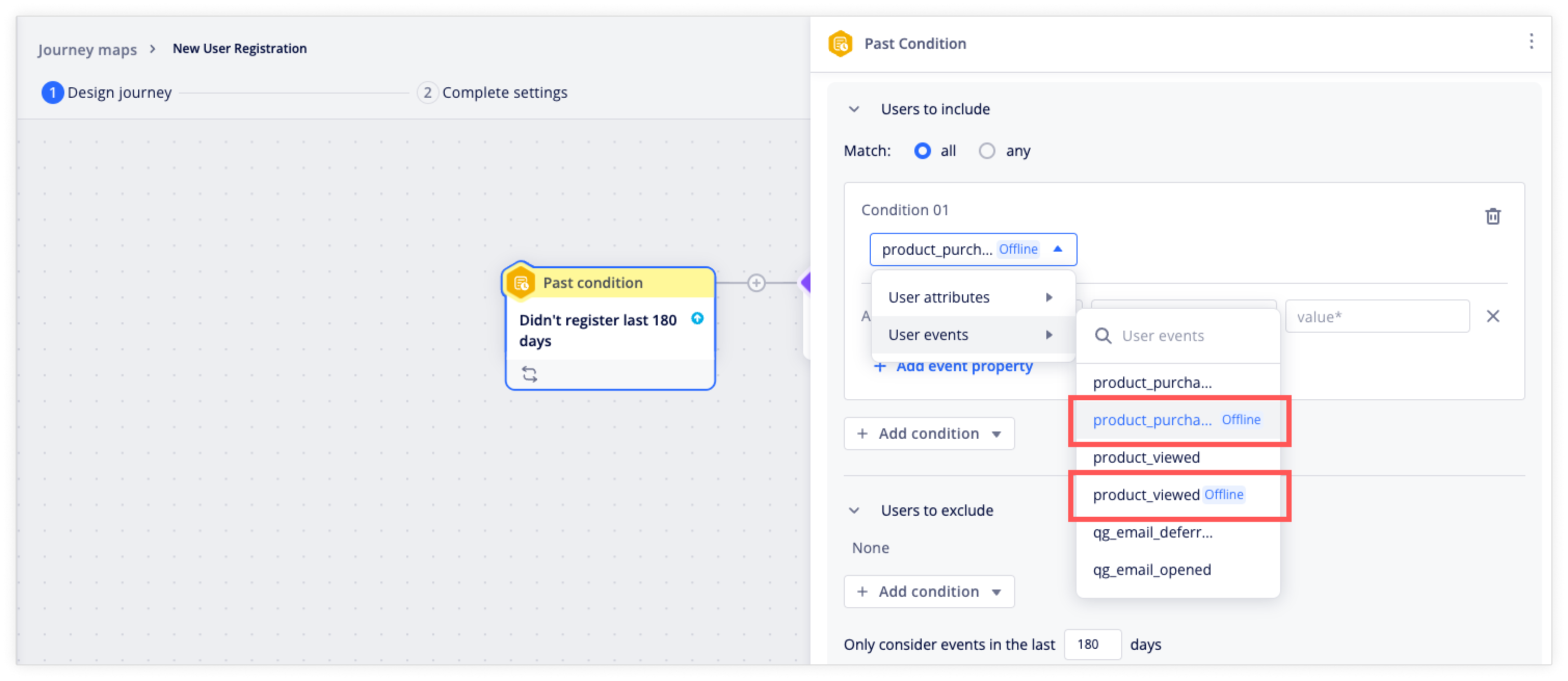Getting Started with Journey Maps
Appier's journey maps use an omni-channel customer journey builder that allows you to quickly launch personalized, comprehensive campaigns across Appier's supported marketing channels. Journey maps are designed for:
- Cross-channel connection: Connect user data across channels to create a holistic user profile and amplify your reach with a wide range of supported platforms including websites and mobile apps, conventional marketing channels such as email and SMS, and messaging channels like LINE and WebChat.
- User-based marketing: Orchestrate user-based campaigns and track performance metrics for each touchpoint, allowing you to quickly identify steps in the journey that can be optimized to maximize conversions.
- Efficient journey map building: With an intuitive interface, dozens of prebuilt templates, and our AI-powered Journey Copilot, you can build customer journeys with minimum effort.

Main concepts
A journey map takes your users through a series of messages based on different conditions at each step of the journey. Users across different devices and channels are unified based on the unique identifier user_id to create a personalized and seamless experience.
Below are the main components of a journey map: Trigger, Message, Split, Wait, and Exit.

- A journey map starts with an entry trigger, which can be based on past conditions, real-time events, or a date-format user attribute. Users who meet the trigger criteria (e.g. signed up for membership) enter the journey.
- Users are targeted with different messages based on the split path they are in (e.g. users who viewed tutorial videos vs users who didn't) and based on the wait time you set.
- Users exit the journey when they reach an exit on the map or when they fulfill the exit criteria (e.g. users fulfilled the marketing goal by making a purchase).
Requirements
NoteContact your customer success manager to activate this feature.
User data requirements
Some features in journey maps have specific user data tracking requirements. Refer to the sections below.
Offline events and segments
In journey maps, you can use offline events when setting up trigger events and conditions. Offline events are identifiable by an Offline tag in journey analytics and can be selected as conversion goals alongside online events.

To use offline events or segments in journey maps:
- The offline events must be uploaded through the Offline Event API v2 with
user_idas the unique identifier. - The offline segments must be created on AIQUA. The offline events must include
user_idas the unique identifier. See segment by offline events.
For details and best practices on using offline events and segments in journey maps, see merging online and offline users.
Limitations
- New offline users uploaded within one day may not be processed in time to be considered in the past conditions.
- Offline events cannot be used as real-time trigger events in in-web and in-app campaigns.
Offline users
If you upload offline users using the Bulk Upload Offline Users API or Add / Update User Profiles feature, be sure to include a user_id in each user record. Offline users need to have an user_id in order to enter a journey.
Tracking date format data
Your user attributes and events may include date-related data such as birthdays and departure dates. Journey maps will automatically convert event or attribute parameters that meet the following requirements to date-type data.
- The value must follow this format:
YYYY-MM-DD - The parameter name must satisfy one of the following requirements:
- The parameter name is
birthday. - The parameter name includes
_date, for example,departure_dateandregister_date_website.
- The parameter name is
After the user data is converted to date format:
- The following operators will be available when setting up conditions in journey maps:
in the past,in the next,before,after,on or before,on or after,during, andin the month of. - Date-format user attributes can be used as a date-based trigger for users to enter the journey.
Limitations
- New offline users uploaded within one day may not be processed in time to be considered in the past conditions.
- Offline events cannot be used as real-time trigger events in in-web and in-app campaigns
Channel integration
Below are the AIQUA and BotBonnie channels you can use in journey maps. Some channels require additional integrations.
Channels | Appier services | Integration required |
|---|---|---|
Web push | AIQUA | No additional integration is required if you are already using these channels on AIQUA. |
LINE | AIQUA BotBonnie | AIQUA: Additional integration is required. See LINE Integration. |
Messenger | BotBonnie | No additional integration is required if you are already using these channels on BotBonnie. |
LINE integration
To use LINE campaigns in journey maps:
- If you are already using LINE on BotBonnie, no additional integration is required.
- If you have not set up LINE integration before or if you have previously set up LINE integration through AIQUA, you must integrate your LINE Official Account through the Appier Enterprise Console.
- To integrate, log into Appier Enterprise Console (
https://console.appier.com/) and follow the LINE integration guide. - Existing LINE users and any associated user data from the AIQUA LINE integration will be synced in journey maps.
- To integrate, log into Appier Enterprise Console (
Updated 5 months ago
